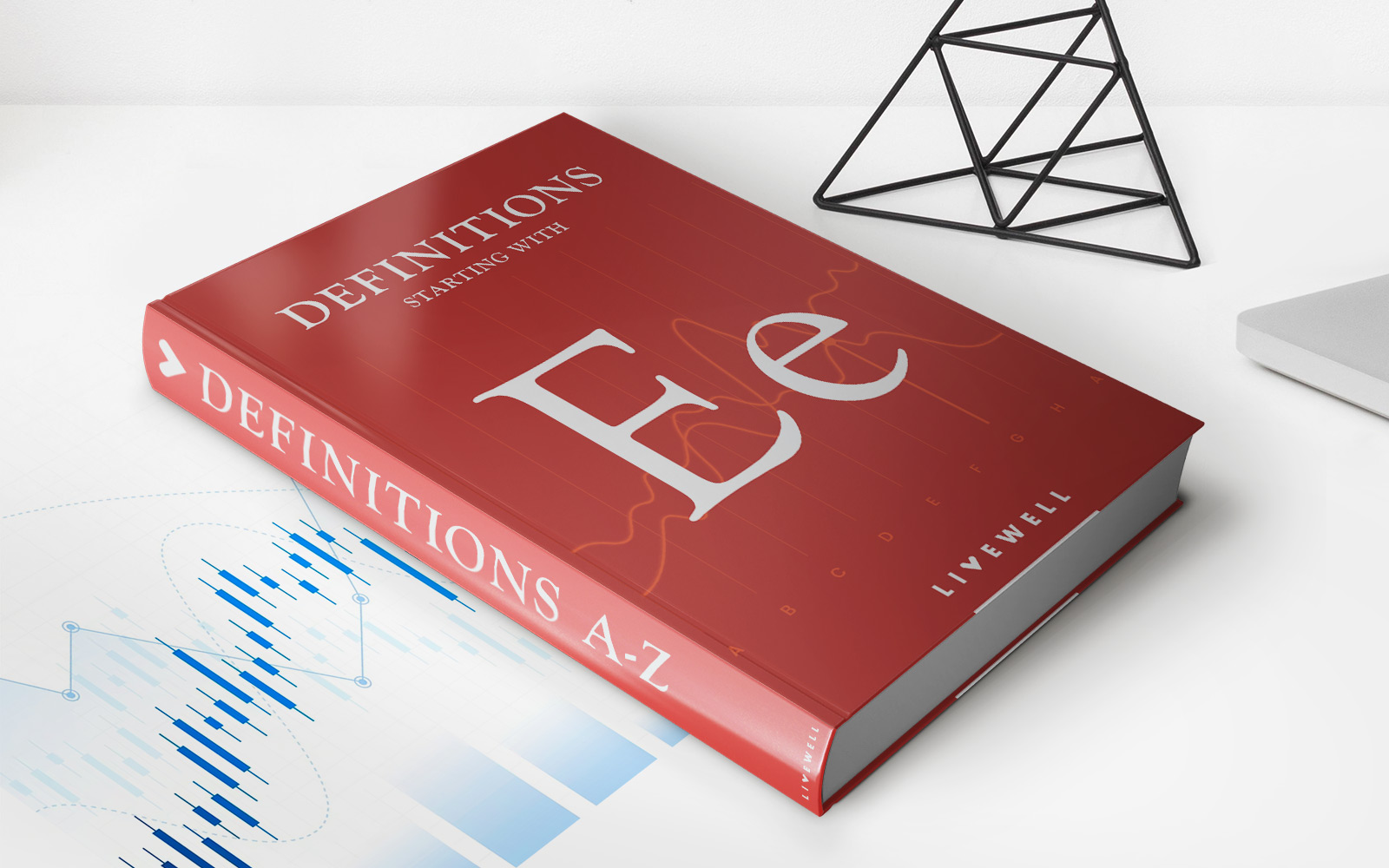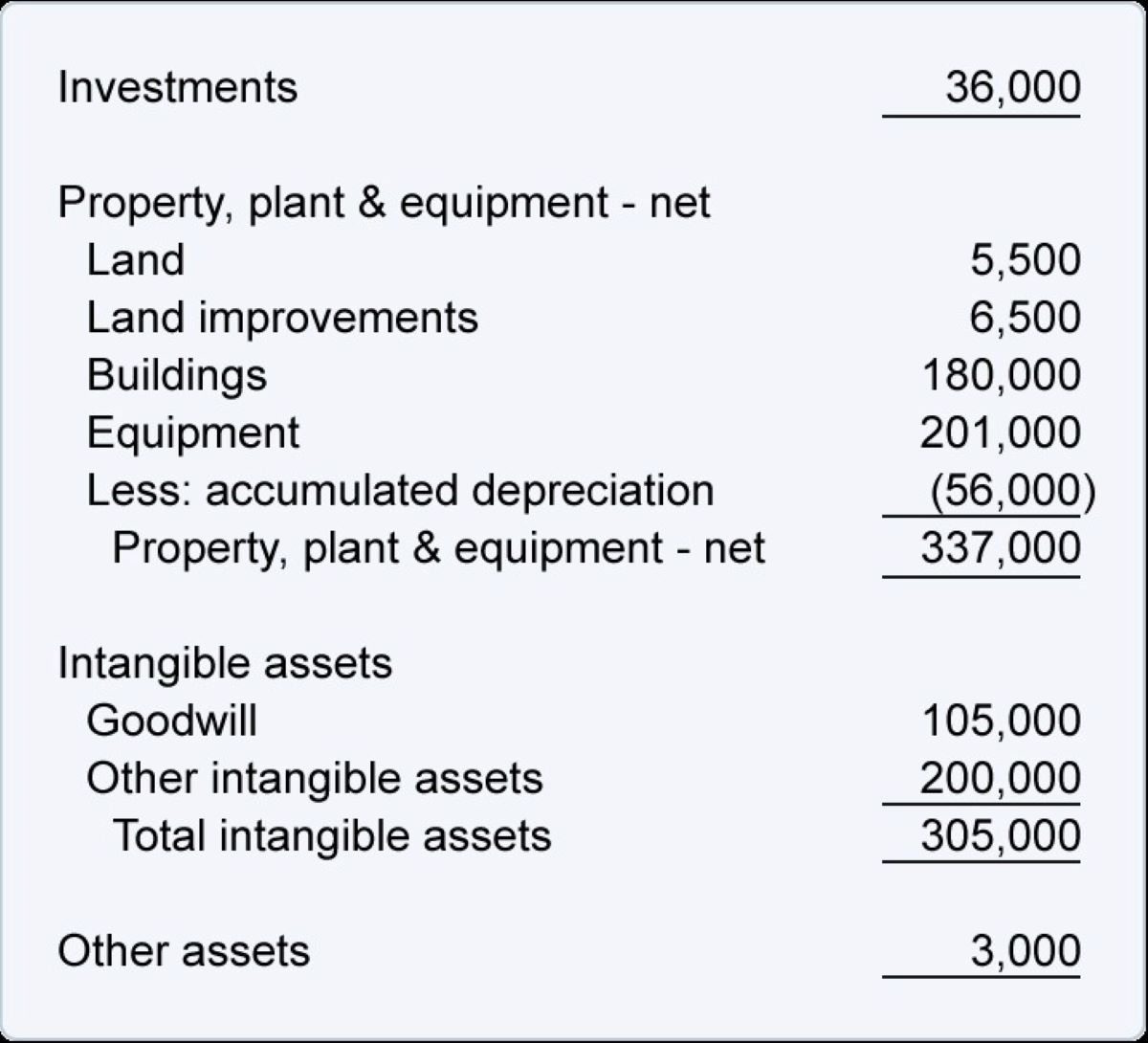

Finance
How To Invest In European Stocks
Modified: January 19, 2024
Learn how to diversify your investment portfolio by investing in European stocks. Gain valuable insights and strategies in finance to maximize your returns.
(Many of the links in this article redirect to a specific reviewed product. Your purchase of these products through affiliate links helps to generate commission for LiveWell, at no extra cost. Learn more)
Table of Contents
Introduction
Investing in the stock market is a great way to grow your wealth over time. It provides an opportunity to participate in the success of companies and benefit from their profitability. While there are stock markets all around the world, European stock markets offer a diverse range of investment opportunities. Investing in European stocks can provide exposure to a wide variety of industries, including technology, healthcare, finance, and energy.
However, investing in European stocks can be daunting for beginners. With different regulations, currencies, and economic conditions, it is important to have a good understanding of the European market before making investment decisions. This article will guide you on how to invest in European stocks, from researching and choosing the right stocks to managing and adjusting your investments. Whether you are a seasoned investor looking to expand your portfolio or a beginner looking to dip your toes into the European market, this article will provide you with the information and strategies you need.
Before diving into the specifics of investing in European stocks, it is crucial to have a basic understanding of how European stock markets operate. Each country in Europe has its own stock exchange, such as the London Stock Exchange in the United Kingdom, Euronext in France, and Deutsche Börse in Germany. These exchanges act as platforms for buying and selling shares of publicly traded companies.
In addition to national stock exchanges, there is also a pan-European exchange known as the Euro Stoxx 50, which includes 50 of the largest and most liquid stocks from 12 Eurozone countries. This index is often used as a benchmark for European stocks. Additionally, there are exchange-traded funds (ETFs) that focus on European stocks, providing investors with a convenient way to gain exposure to a diversified portfolio of European companies.
Now that you have a basic understanding of European stock markets, the next step is to research and identify suitable European stocks to invest in. In the following sections, we will delve deeper into the process of researching, selecting, and managing your European stock investments. Let’s get started!
Understanding European Stock Markets
The European stock markets offer a diverse range of investment opportunities, but understanding how these markets function is essential for successful investing. Europe is home to some of the world’s largest and most influential stock exchanges, including the London Stock Exchange, Euronext, and Deutsche Börse.
Each European country has its own stock exchange, where companies list their shares for trading. The size and liquidity of these exchanges can vary, with larger exchanges like the London Stock Exchange offering a more extensive selection of companies and higher trading volumes.
One key aspect of European stock markets is the role of regulatory bodies. Each country has its own regulatory authority that oversees the operations and integrity of the stock market. For example, in the UK, the Financial Conduct Authority (FCA) is responsible for regulating the London Stock Exchange and ensuring fair and transparent trading practices. Familiarize yourself with the regulatory framework in the specific country or countries you are interested in investing in.
Another important factor to consider is the currency in which the stocks are traded. European stock markets typically operate in the local currency, such as British pounds (GBP), euros (EUR), or Swiss francs (CHF). As an investor, you need to be aware of currency exchange rates and their potential impact on your investments. Fluctuations in currency values can affect the overall return on your investment. It is advisable to factor in currency risk when evaluating your investment choices.
European stock markets also vary in terms of the sectors and industries that are dominant within a particular country. For example, Germany is renowned for its manufacturing and automotive industries, while France has a strong presence in luxury goods and aerospace. Understanding the strengths and weaknesses of different European economies can help you identify investment opportunities in specific sectors.
Additionally, it is crucial to stay informed about the broader economic conditions and geopolitical developments that can impact European stock markets. Changes in interest rates, political events, trade policies, and economic indicators can all influence stock market performance. Keeping abreast of the latest news and analysis can help you make more informed investment decisions.
One convenient way to gain exposure to European stocks is through exchange-traded funds (ETFs) that track European stock indices. ETFs are funds that are traded like stocks and replicate the performance of a specific index. For example, the iShares Euro Stoxx 50 ETF tracks the Euro Stoxx 50 index, providing investors with broad exposure to the largest companies in the Eurozone. These ETFs offer diversification and liquidity, making them suitable for investors seeking a more passive approach to European stock investing.
Understanding the nuances of European stock markets is essential for successful investing. By familiarizing yourself with the regulatory environment, currency risks, industry strengths, and economic conditions, you can make informed decisions and maximize the potential returns from your European stock investments.
Researching European Stocks
Research is a critical step in the process of investing in European stocks. By conducting thorough research, you can identify promising companies, evaluate their financial health and growth potential, and make informed decisions about which stocks to invest in. Here are some key factors to consider when researching European stocks:
- Financial Performance: Review the financial statements of the company, including its revenue, earnings, and cash flow. Look for consistent revenue growth and strong profitability. Assess the company’s debt levels and evaluate its ability to meet its financial obligations.
- Industry Analysis: Examine the industry in which the company operates. Evaluate the company’s position within the industry, its competitive advantages, and the potential for growth in the sector. Consider factors such as technological advancements, regulatory changes, and market trends that could impact the industry’s prospects.
- Management Team: Assess the company’s management team and their track record. Research the CEO and key executives to understand their experience, leadership style, and past successes. A strong management team is crucial for the long-term success of a company.
- Market Share and Competition: Analyze the company’s market share and its competition. Identify its main competitors and assess their strengths and weaknesses. Look for companies with a sustainable competitive advantage or a unique value proposition that sets them apart from their rivals.
- Valuation: Evaluate the stock’s valuation by analyzing its price-to-earnings (P/E) ratio, price-to-sales (P/S) ratio, and other relevant valuation metrics. Compare these ratios to industry peers to determine if the stock is undervalued or overvalued. Consider other factors such as the company’s growth prospects and market conditions when assessing its valuation.
- Dividend History: If you’re interested in generating income from your investments, consider the company’s dividend history. Look at its dividend yield and examine its dividend growth over time. A track record of consistent dividend payments and increases can be a positive sign of financial stability and shareholder-friendly management.
- Analyst Reports: Read research reports and analyst recommendations on the stock. Analysts often provide insights and opinions on individual companies, including price targets and investment ratings. While it is important to consider analyst opinions, always conduct your own research and analysis to form your independent view.
There are various resources available to conduct research on European stocks. Financial websites, such as Bloomberg, Reuters, and Yahoo Finance, provide comprehensive information on stock performance, financials, news articles, and analyst reports. Additionally, many brokerage firms offer research reports and analysis as part of their services.
Remember that investing in individual stocks carries risks, and thorough research can help mitigate those risks. It’s also important to diversify your portfolio by investing in a variety of stocks across different industries and countries to spread out the risk. By dedicating time to researching European stocks, you can make informed investment decisions and increase your chances of success in the stock market.
Choosing the Right European Stocks
Choosing the right European stocks is crucial for successful investing. With a multitude of options available, it’s important to have a systematic approach to select stocks that align with your investment goals and risk tolerance. Here are some key considerations to help you choose the right European stocks:
- Define Your Investment Goals: Determine your investment objectives, whether it’s long-term capital appreciation, income generation, or a combination of both. Your investment goals will influence the types of stocks you choose and the level of risk you are comfortable with.
- Evaluate the Company’s Fundamentals: Assess the company’s financial health, growth prospects, and competitive position within its industry. Look for companies with strong revenue growth, healthy profit margins, and a sustainable business model. Consider factors such as the company’s market share, innovation, and ability to adapt to changing market conditions.
- Consider the Industry Outlook: Analyze the industry or sector the company operates in. Look for industries with solid growth potential, favorable economic conditions, and positive long-term prospects. Consider trends and market forces that could impact the industry, such as technological advancements, regulatory changes, or shifts in consumer behavior.
- Assess Risk and Volatility: Evaluate the risk level and volatility associated with the stock. Consider factors such as the company’s financial stability, exposure to macroeconomic risks, and market conditions. Volatile stocks may offer higher potential returns but also come with increased risk.
- Diversify Your Portfolio: Avoid putting all your eggs in one basket by diversifying your investments across different industries, sectors, and countries. This helps spread out risk and reduces the impact of any single stock’s performance on your overall portfolio.
- Consider Dividends: If you are seeking income from your investments, consider stocks that offer regular dividend payments. Look for companies with a history of stable or growing dividends, as this indicates financial strength and a commitment to shareholder returns.
- Stay Informed: Keep up-to-date with the latest news, market trends, and company developments. Regularly review financial statements, analyst reports, and news articles to stay informed about your chosen stocks.
- Seek Professional Advice: If you are uncertain or lack the time and expertise to choose stocks on your own, consider seeking advice from a financial advisor or investment professional. They can help you create a tailored investment strategy and provide insights based on their knowledge and experience.
Remember that investing in stocks involves risk, and there is no guarantee of positive returns. It is important to conduct thorough research, assess your risk tolerance, and make informed decisions based on your investment goals. By following a systematic approach and staying informed, you can increase your chances of choosing the right European stocks that have the potential to generate favorable returns over the long term.
Evaluating Risk and Return
When investing in European stocks, it is essential to evaluate the potential risk and return of your investments. Understanding the relationship between risk and return is crucial for making informed investment decisions and managing your portfolio effectively. Here are some key factors to consider when evaluating risk and return:
- Volatility: Volatility refers to the price fluctuations of a stock or the overall market. High volatility indicates larger price swings, which can lead to both higher potential returns and increased risk. Assess the historical volatility of a stock to gauge its risk level and determine whether it aligns with your risk tolerance.
- Beta: Beta is a measure of a stock’s sensitivity to market movements. A beta of 1 indicates the stock moves in line with the market, while a beta greater than 1 suggests higher volatility than the market. A beta less than 1 indicates lower volatility. Consider the beta of a stock to understand its potential risk relative to the broader market.
- Financial Stability: Evaluate the financial health of the company you are considering investing in. Look at metrics such as the company’s debt levels, liquidity, and profitability. A financially stable company is generally better equipped to weather economic downturns and market volatility.
- Diversification: Diversifying your portfolio by investing in a variety of stocks across different industries and countries can help mitigate risk. By spreading out your investments, you reduce the impact of any one stock’s performance on your portfolio. Consider investing in stocks with varying levels of risk and return potential to achieve a balanced portfolio.
- Return Potential: Assess the potential returns of a stock by analyzing its historical performance, growth prospects, and industry outlook. Look for companies with a track record of delivering consistent returns and those that operate in sectors with growth potential. Consider factors such as revenue growth, profitability, and market conditions that could impact the stock’s future returns.
- Market Conditions: Evaluate the overall economic and market conditions that could impact the performance of European stocks. Consider factors such as interest rates, inflation, geopolitical events, and regulatory changes. These factors can affect both the risk and return of your investments.
- Investment Horizon: Your investment horizon, or the length of time you plan to invest, is a crucial factor in evaluating risk and return. Generally, stocks have the potential for higher returns over the long term, but they also come with higher volatility in the short term. Assess your investment timeline and align your risk and return expectations accordingly.
- Risk Management: Implement risk management strategies to protect your portfolio from potential losses. This can include setting stop-loss orders, diversifying your investments, regularly reviewing and adjusting your portfolio, and staying disciplined in your investment approach.
It’s important to note that risk and return are inherently linked. Higher potential returns are often accompanied by higher levels of risk. Finding the right balance between risk and return is a personal decision that should consider your investment goals, risk tolerance, and time horizon.
By carefully evaluating the potential risk and return of European stocks, you can make informed decisions and build a well-balanced investment portfolio that aligns with your financial objectives and risk tolerance.
Making Your Investment
Once you have done your research, evaluated risk and return, and selected the right European stocks, it is time to make your investment. Here are the key steps to follow when making your investment:
- Open a Brokerage Account: To invest in European stocks, you will need to open a brokerage account that offers access to international markets. Research and choose a reputable brokerage firm that provides a user-friendly platform, competitive commissions, and access to the European stock exchanges you are interested in.
- Fund Your Account: Deposit funds into your brokerage account to have capital available for investment. You can transfer money from your bank account to your brokerage account through various methods, such as wire transfer or electronic funds transfer (EFT). Ensure that you understand the deposit process and any associated fees.
- Place Your Trade: With your account funded, you can now place your trade. Use your brokerage platform to search for the specific European stock you wish to invest in. Enter the necessary details, such as the stock symbol, quantity, and order type (e.g., market order or limit order).
- Review and Confirm: Before finalizing your trade, carefully review all the details to ensure accuracy. Confirm that you are buying the correct stock and entering the correct order type and quantity. Pay attention to any additional fees or charges associated with the trade.
- Execute the Trade: Once you are satisfied with the details, confirm your trade to execute it. The brokerage platform will process your order and complete the purchase of the European stock on your behalf.
- Monitor Your Investment: After making your investment, it is important to stay actively engaged in managing your portfolio. Monitor the performance of your European stocks, including tracking any news or developments that may affect their value. Consider setting up alerts or notifications to stay informed about price changes or significant events.
- Implement a Review and Adjustment Strategy: Regularly review your portfolio and assess the performance of your European stocks. If necessary, make adjustments to your holdings based on market conditions, changes in your investment goals, or new investment opportunities. This could involve selling underperforming stocks, rebalancing your portfolio, or adding new European stocks to diversify further.
- Stay Informed and Seek Professional Advice: Stay informed about market trends, economic indicators, and company news that may impact your European stocks. Consider staying up-to-date with financial news, reading research reports, and attending investor conferences or webinars. If needed, seek advice from financial professionals or consult with a trusted financial advisor to help guide your investment decisions.
Remember, investing in European stocks involves risk, and it is important to carefully consider your investment objectives and risk tolerance before making any investment decisions. By following these steps and staying engaged in managing your investments, you can effectively make your European stock investments and work towards achieving your financial goals.
Managing Your European Stock Portfolio
Managing your European stock portfolio is crucial for maximizing your investments and achieving your financial goals. Effective portfolio management involves monitoring your holdings, assessing performance, and making strategic adjustments as needed. Here are key steps to managing your European stock portfolio:
- Regularly Review Your Portfolio: Set a schedule to review your portfolio on a regular basis. This could be monthly, quarterly, or semi-annually, depending on your preferences and the frequency of market fluctuations. Assess the performance of your European stocks, compare it to your investment goals, and evaluate whether any adjustments are necessary.
- Assess Stock Performance: Analyze the performance of individual European stocks in your portfolio. Consider factors such as changes in stock price, volatility, and any news or developments that may impact their value. Determine if any stocks are consistently underperforming or if there are opportunities to take profits on stocks that have reached your target price levels.
- Rebalance Your Portfolio: Rebalancing involves adjusting the weightings of your stocks to align with your desired asset allocation. If certain stocks have significantly appreciated or depreciated in value, it may be necessary to rebalance your portfolio by buying or selling stocks to maintain your target allocation. Rebalancing helps to manage risk and ensure your portfolio remains diversified.
- Consider Tax Implications: Be aware of the potential tax implications of buying or selling European stocks. Consult with a tax advisor to understand the tax rules in your jurisdiction and determine the most tax-efficient strategies for managing your portfolio. Tax considerations may include capital gains taxes, dividend taxes, and any rules related to foreign investments.
- Stay Informed: Continuously stay informed about market trends, economic indicators, and company news that may impact your European stocks. Regularly read financial news, research reports, and stay updated on global events that could have implications for your investments. This information will help you make informed decisions and adjust your portfolio accordingly.
- Keep Emotions in Check: Emotional decision-making can lead to poor investment choices. Instead, base your decisions on rational analysis and your long-term investment goals. Avoid making impulsive decisions based on short-term market fluctuations and stay focused on your investment strategy.
- Monitor Risk and Diversification: Continuously assess the risk levels within your portfolio and ensure adequate diversification. Review the sectors, industries, and geographic exposures of your European stocks to maintain a healthy level of diversification. Assess the potential risks associated with your holdings and consider adjusting your portfolio if your risk tolerance changes.
- Consider Dollar-Cost Averaging: Dollar-cost averaging is an investment strategy where you invest a fixed amount of money at regular intervals, regardless of market conditions. This approach can help mitigate the impact of short-term market volatility. Consider implementing dollar-cost averaging when investing in European stocks to smooth out the impact of market fluctuations.
- Track Performance and Evaluate Strategies: Keep track of your portfolio’s performance by monitoring your investments and comparing them to relevant market benchmarks. Evaluate the effectiveness of your investment strategies and consider making adjustments if necessary. Regularly review your investment goals and assess if they are being met.
Remember that managing your European stock portfolio requires ongoing attention and assessment. Stay disciplined, keep your investment goals in mind, and make informed decisions based on logic rather than emotion. By effectively managing your European stock portfolio, you can position yourself for long-term growth and increase your chances of achieving financial success.
Monitoring and Adjusting Your Investments
Monitoring and adjusting your investments is an essential part of successful portfolio management. By consistently monitoring the performance of your European stock investments and making necessary adjustments, you can optimize your portfolio and respond to changing market conditions. Here are key steps to effectively monitor and adjust your investments:
- Stay Informed: Keep yourself updated with the latest news, market trends, and economic indicators that could impact your European stock investments. Subscribe to financial websites, follow reputable sources, and set up alerts for news related to your investments. Stay informed about company announcements, earnings reports, and any significant developments that could affect the performance of your stocks.
- Analyze Performance: Regularly assess the performance of your European stocks. Compare their performance against relevant benchmarks and evaluate whether they are meeting your investment goals. Identify stocks that are underperforming or showing signs of weakness and consider whether it is appropriate to make adjustments or divest from those positions.
- Monitor Risk: Continuously monitor the risk levels in your portfolio. Consider the volatility, market conditions, and any external factors that could impact your investments. Assess if your portfolio is appropriately diversified and adjust the risk exposure if needed. Ensure that the risk level aligns with your risk tolerance and investment objectives.
- Review Fundamental Data: Regularly review and update the fundamental data of the companies in your portfolio. Look at financial statements, earnings reports, and company disclosures to evaluate the financial health and growth prospects of the stocks. Compare the fundamental data with your original investment thesis and assess if the stocks are still aligned with your expectations.
- Consider Market Conditions: Take into account the prevailing market conditions when assessing your European stock investments. Evaluate the broader economic landscape, geopolitical events, and sector-specific trends. Adjust your investment strategy as necessary to take advantage of opportunities or mitigate potential risks arising from changing market conditions.
- Regularly Rebalance: Periodically rebalance your portfolio to maintain your desired asset allocation. Rebalancing involves adjusting the weightings of your stocks to maintain a diversified portfolio. Sell stocks that have performed well and are now overrepresented in your portfolio, and consider adding to positions that have underperformed or may offer significant growth potential.
- Assess Investment Goals: Regularly reassess your investment goals and evaluate if they are still aligned with your current financial situation, time horizon, and risk tolerance. Adjust your investment strategy and portfolio allocations as needed to ensure that your investments continue to support your goals effectively.
- Consult with Professionals: If necessary, seek advice from financial professionals or consult with a trusted financial advisor. They can provide valuable insights and guidance based on their expertise and experience. Discuss your investment strategy, seek recommendations, and get a second opinion when needed.
- Maintain Discipline: Stay disciplined and avoid making impulsive investment decisions based on short-term market fluctuations. Stick to your long-term investment strategy and avoid being swayed by emotions. Be patient and have faith in your research and analysis.
Monitoring and adjusting your investments requires consistent effort and attention. Continuously reassess your portfolio, stay informed, and remain proactive in making necessary adjustments to ensure that your European stock investments are well-managed and effectively aligned with your financial goals.
Conclusion
Investing in European stocks can be a rewarding endeavor for individuals looking to grow their wealth and diversify their investment portfolios. By understanding the nuances of European stock markets, conducting thorough research, and making informed investment decisions, you can position yourself for long-term success.
In this article, we explored the various aspects of investing in European stocks, including understanding European stock markets, researching and choosing the right stocks, evaluating risk and return, making your investments, and managing and adjusting your portfolio. By following these steps, you can navigate the intricacies of the European stock market and make sound investment choices.
Remember, investing in individual stocks carries risks, and it is essential to conduct thorough research and assess the risk and return of your investments. Diversification is key to managing risk, so ensure your portfolio consists of a variety of European stocks across different industries and countries. Regularly monitor the performance of your stocks, stay informed about market trends and economic conditions, and make adjustments as necessary to align with your investment goals.
While this article provides a comprehensive overview of investing in European stocks, it is important to continue learning and staying informed about the evolving market conditions. Consider expanding your knowledge through additional research, staying updated with financial news, and considering professional advice when needed.
Investing in European stocks requires patience, discipline, and a long-term perspective. By carefully evaluating your investment choices, managing risk, and staying committed to your investment strategy, you can unlock the potential for growth and achieve your financial objectives.
As with any investment, it is important to remember that past performance is not indicative of future results. Markets can fluctuate, and there are no guarantees of returns. Therefore, it is crucial to perform your due diligence and make informed decisions based on your own financial situation, risk tolerance, and investment goals.














